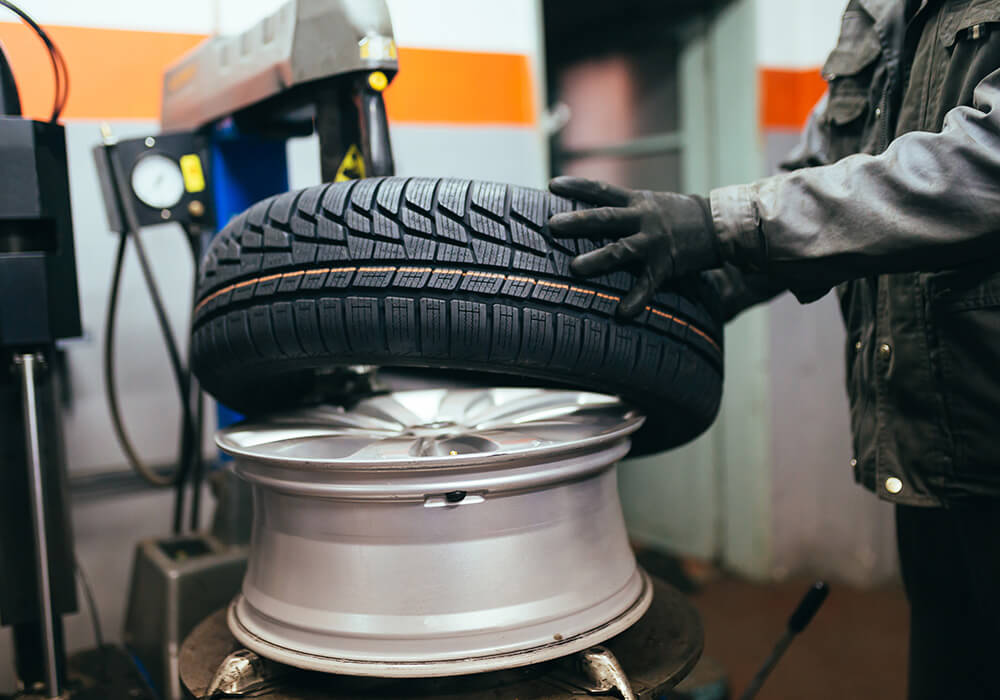Experience Accuracy with GMC Tire Service at Morris Tires
Wiki Article
Tire Solution: The Effect of Weather Problems
When it comes to making sure optimal efficiency and safety and security on the roadway, comprehending the impact of weather condition problems on tire service is essential. GMC Tire Service. In this conversation, we will certainly check out the intricate connection in between weather problems and tire solution, dropping light on the importance of weather-specific tire maintenance practices and considerations.Warmth and Tire Performance
When exposed to heats, tires experience modifications in performance that can substantially impact lorry security and handling. The warm generated from extended driving or heat problems creates the tire rubber to soften, leading to minimized walk life and increased wear. As the rubber becomes softer, the tire's hold when traveling reduces, influencing stopping ranges and total grip. In severe instances, excessive heat can also trigger tire blowouts, positioning an extreme safety danger to the vehicle and its occupants.
Winter Results
Cold weather condition conditions can have a considerable influence on tire performance and security. In cold weather condition, tires might additionally shed air pressure extra quickly, which can influence dealing with and gas efficiency.To minimize the impacts of winter on tires, it is important to on a regular basis check tire pressure and inflate them to the producer's suggested levels. Using winter months or all-season tires designed for chilly climate problems can likewise improve grip and grasp on icy or snowy roads. Correct tire upkeep, including routine examinations for wear and damage, ends up being a lot more vital during colder months to guarantee optimal efficiency and safety.
Rainy Issues Effect
During rainy conditions, tire performance and safety and security can be substantially affected by the damp roadway surfaces and decreased visibility. The step pattern of tires plays a critical duty in keeping traction on wet roadways. Tires with damaged footsteps are much more prone to hydroplaning, where a layer of water develops between the roadway and the tire surface, bring about loss of traction. To battle this, drivers must regularly inspect their tires for sufficient walk depth and consider buying tires specifically developed for damp problems.Moreover, stormy weather can additionally reduce exposure, making it testing for chauffeurs to see the roadway ahead plainly (GMC Tire Service). In such problems, it is vital to change driving rates as necessary and maintain a safe adhering to distance to allow for abrupt quits. Correctly filled with air tires can likewise assist in preserving control on wet roads by supplying better handling and grip
Snow and Tire Security
Snow-covered roads position distinct challenges for drivers, emphasizing the value of correct tire choice and maintenance. When driving in snowy conditions, having the right tires can make a significant difference in safety and security and efficiency. Wintertime tires are created with special rubber compounds and tread patterns to provide better grip on snow and ice contrasted to all-season tires. The much deeper footsteps and sipes of winter season tires help hold the roadway much better, minimizing the danger of moving and sliding.
It is vital to adhere to producer directions when setting up and using tire chains to avoid damage to the tires and lorry. By selecting the appropriate tires, keeping proper rising cost of living, and taking into consideration extra grip aids like tire chains, chauffeurs can enhance their safety when browsing snow-covered roads.
Weather-Related Tire Upkeep
Weather-related tire maintenance includes a variety of practices aimed at ensuring ideal tire function and longevity in different climate scenarios. One essential aspect of weather-related tire upkeep is tire pressure guideline. Checking tire walk on a regular basis and changing tires when walk wear reaches a specific deepness is important for keeping traction and security in negative weather.
Final Thought
Finally, climate condition have a significant effect on tire efficiency and safety. From heat impacting tire stress and use to cool climate lowering traction, it is essential to take into consideration the climate when maintaining and making use of tires. Wet problems visit can reduce grasp and cause hydroplaning, while snow can boost the risk of accidents if tires are not appropriately geared up. Weather-related tire maintenance is crucial in making certain optimal efficiency and security on the roadways.In this discussion, we will certainly discover the intricate connection between weather condition problems and tire solution, losing light click over here on the relevance of weather-specific tire maintenance methods and considerations.

Report this wiki page